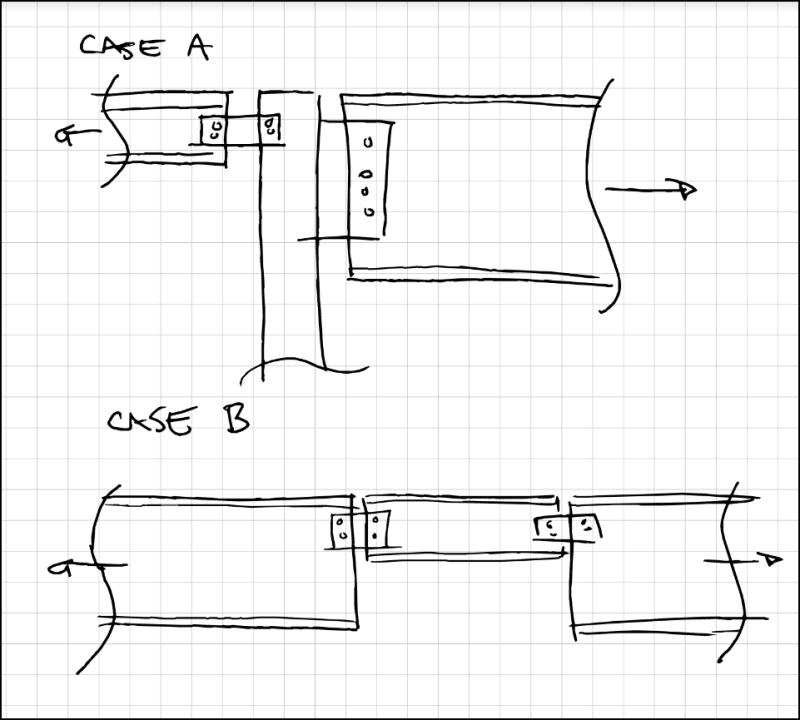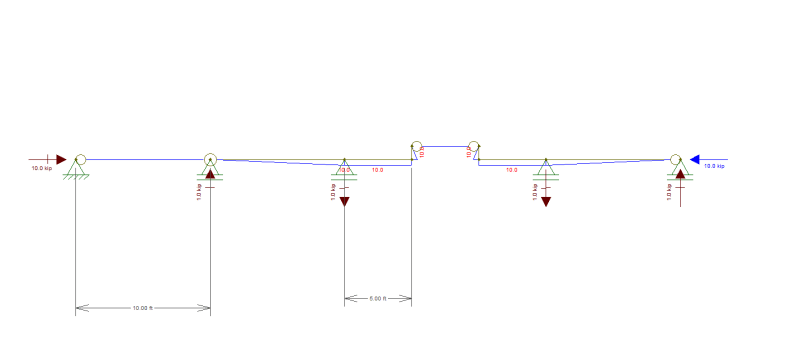canadiancastor
Structural
I've come across a simple (almost shameful) question that has me stumped. The initial question is whether we should "offset" all of the beams in our FEA models of steel structures so that the top of the beams all is level, which is how it's going to be in practice. I've never done this, but thinking about axial loads in collector beams, I'm now wondering if there's a hidden moment I should be considering (and if there is, where should it be considered?) The two practical cases I can think of are:
A - different height of beams at a column
B - different height of beams in a gerber system
For A, I figure this can be resolved by applying to point loads to the column and making sure it can withstand the induced moment. In this case, using FEA offsets would probably be a good idea to get the right moments in the columns.
For B, this one has me stumped. I don't think it's a good idea to use a full moment connection, that would remove any efficiency gained using the Gerber system. Maybe the connection needs to be full moment on one side only? I can't visualize what would happen if I kept regular pin connections there and was a huge axial load. Would the ends of the large beams "curve down" to better align with the applied load?

A - different height of beams at a column
B - different height of beams in a gerber system
For A, I figure this can be resolved by applying to point loads to the column and making sure it can withstand the induced moment. In this case, using FEA offsets would probably be a good idea to get the right moments in the columns.
For B, this one has me stumped. I don't think it's a good idea to use a full moment connection, that would remove any efficiency gained using the Gerber system. Maybe the connection needs to be full moment on one side only? I can't visualize what would happen if I kept regular pin connections there and was a huge axial load. Would the ends of the large beams "curve down" to better align with the applied load?



![[curse] [curse] [curse]](/data/assets/smilies/curse.gif)
![[banghead] [banghead] [banghead]](/data/assets/smilies/banghead.gif)